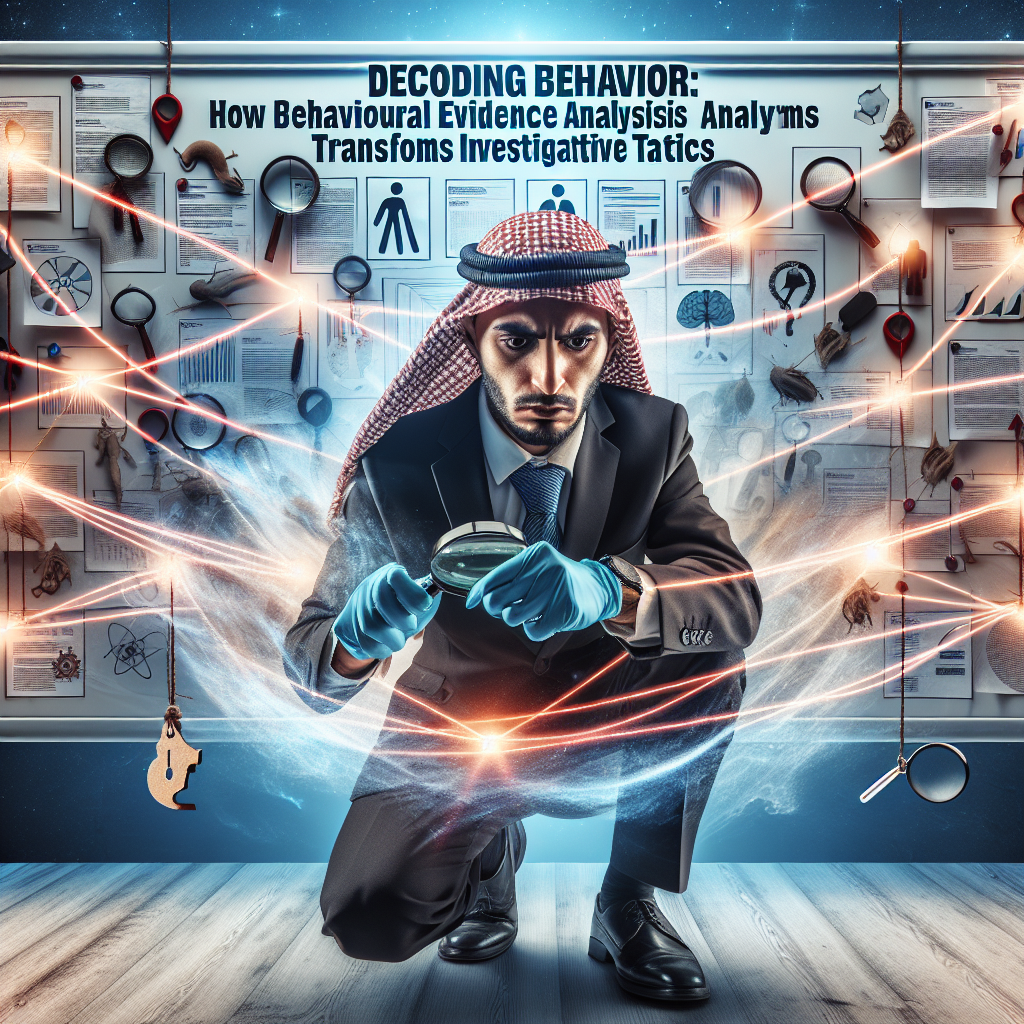
Introduction
In today’s complex world, where crime can often feel random and chaotic, understanding human behavior is paramount for effective investigation. Decoding Behavior: How Behavioral Evidence Analysis Transforms Investigative Tactics offers us a glimpse into the transformative power of analyzing actions and psychological patterns. This approach has broad applications in criminal justice, helping investigators not just to solve cases but to predict future criminal behavior effectively. Join us on this enlightening journey as we explore the intricacies of behavioral evidence analysis and uncover its vital role in modern investigative tactics.
The Foundation of Behavioral Evidence Analysis
Understanding Behavioral Evidence Analysis
Behavioral Evidence Analysis (BEA) is a systematic approach that focuses on the psychological principles underlying criminal behavior. By studying various indicators such as motive, opportunity, and modus operandi, investigators can gain invaluable insights into an offender’s mind.
Key Components of BEA:
- Motive Identification: Understanding why a crime was committed.
- Behavioral Consistency: Analyzing if the actions of the suspect align with known patterns of behavior.
- Contextual Analysis: Considering environmental factors that may influence an offender’s behavior.
Real-World Applications of BEA
The true power of Decoding Behavior: How Behavioral Evidence Analysis Transforms Investigative Tactics lies in real-world application. For instance, by employing BEA techniques, investigators can create psychological profiles of suspects. This not only speeds up the identification process but also minimizes wrongful accusations.
Case Study: The Unabomber
Ted Kaczynski, also known as the Unabomber, exemplifies BEA in action. His lengthy campaign of bombings baffled authorities for nearly two decades. However, investigators utilized BEA to analyze his writings and behaviors. By focusing on his ideology and previous life experiences, they refined their profiles and ultimately captured him. This case underlines how Decoding Behavior can lead to successful outcomes.
Practical Techniques in Behavioral Evidence Analysis
Interview Techniques
Interviewing witnesses and suspects is often an art that blends psychological insight with investigative skill. Understanding behavioral cues during these conversations is crucial.
Key Interview Strategies:
- Building Rapport: Creating a connection increases the likelihood of obtaining truthful information.
- Active Listening: Observing non-verbal cues can unravel inconsistencies in statements.
Crime Scene Analysis
The physical evidence left at crime scenes can tell us a lot about the perpetrator’s mindset. A detailed behavioral analysis can provide context around the evidence collected.
Table 1: Common Crime Scene Behaviors and Potential Insights
| Behavior Observed | Potential Insight |
|---|---|
| Organized evidence present | Strict planning; low impulsivity |
| Chaotic scene | High impulsivity; crime of passion |
| Signature behaviors | Need for recognition or control |
Predictive Behavioral Analysis
At the forefront of modern investigations, predictive behavioral analysis seeks to anticipate future actions of potential offenders. By analyzing historical data, patterns emerge that can indicate when and where future crimes might occur.
Case Study: Serial Offender Profiling
In the case of the Green River Killer, Gary Ridgway, authorities utilized historical and behavioral data to determine his possible movements and future targets. By applying the principles of Decoding Behavior, law enforcement was able to narrow down their search significantly.
The Importance of Multidisciplinary Approach
Integration with Other Disciplines
Decoding Behavior: How Behavioral Evidence Analysis Transforms Investigative Tactics is not limited to psychology alone. Collaboration across various fields can enhance investigative outcomes.
- Psychology: Provides foundational knowledge in human behavior.
- Forensic Science: Offers tangible physical evidence to complement behavioral insights.
- Sociology: Helps understand societal influences on behavior.
Team Dynamics in Investigations
Having a cohesive team that utilizes BEA techniques can lead to more efficient case resolutions. Each member brings unique perspectives that enrich the overall investigative approach.
Challenges in Implementing Behavioral Evidence Analysis
Misinterpretation of Evidence
While BEA is a potent tool, misinterpretations can have adverse effects. An investigator must be trained in distinguishing between genuine behavioral indicators and coincidental evidence.
Ethical Considerations
The ethical implications of profiling and behavioral analysis must be addressed. Overreliance on BEA can lead to profiling biases, which can further complicate investigations.
Conclusion
Decoding Behavior: How Behavioral Evidence Analysis Transforms Investigative Tactics is revolutionizing investigations in ways that are profound and meaningful. As we’ve seen through various case studies and practical applications, behavioral analysis provides an essential supplement to traditional investigative tactics. By embracing this multidimensional approach and understanding the psychological nuances of criminal behavior, we can not only solve crimes more effectively but also prevent future ones.
In a world where understanding behavior is more critical than ever, it is our responsibility to harness these insights responsibly and ethically.
FAQs
1. What is Behavioral Evidence Analysis?
Behavioral Evidence Analysis is a psychological approach used in investigations to analyze the behavior and actions of individuals involved in criminal activities, helping to create profiles and predict future behavior.
2. How can BEA improve investigative techniques?
By understanding the motives and behavioral patterns of criminals, BEA allows investigators to focus their efforts more effectively, leading to faster resolutions and reduced chances of wrongful accusation.
3. Are there any risks associated with using BEA?
Yes, misinterpretation of behavioral signals can lead investigators down the wrong path. Additionally, there’s a risk of profiling biases that can adversely affect justice.
4. How important is interdisciplinary collaboration in BEA?
Interdisciplinary collaboration enhances the effectiveness of BEA by integrating insights from psychology, sociology, and forensic science, which enriches the investigative process.
5. Can BEA be applied outside of criminal investigations?
Absolutely! Behavioral evidence analysis can be applied in areas like corporate investigations, employee assessments, and even understanding consumer behavior in marketing.
With the integration of Behavioral Evidence Analysis, we stand at the cusp of a new investigative paradigm. One that emphasizes not just what people do, but why they do it, and how that understanding can lead to safer communities.

















